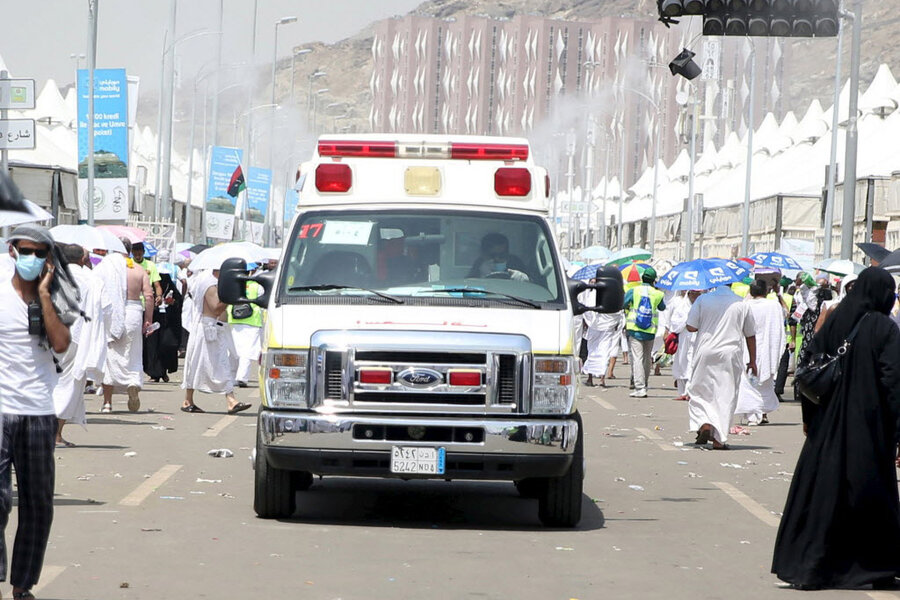Hajj stampede: 700 crushed in deadliest pilgrimage incident in decades
Loading...
More than 700 people were killed and 800 more injured in a stampede Thursday during the annual hajj pilgrimage to Mecca, in Saudi Arabia.
It was the second disaster during this year’s hajj season, and the deadliest hajj incident in more than two decades. Nearly two weeks ago, a crane collapse in Mecca left more than 100 people dead and nearly 400 injured.
Thursday’s panic took place in Mina, a valley about three miles outside the holy city of Mecca, where hajj stampedes have historically taken place. Mina is a part of the religious expedition required of every able-bodied Muslim where pilgrims symbolically stone the devil by throwing rocks against three stone columns. Mina also houses more than 160,000 tents for pilgrims to sleep in during their journey.
A Christian Science Monitor article explains in further detail:
The pilgrims return to Mina, a village outside Mecca, for another important step of the Hajj: stoning the devil. The pilgrims will launch several of the pebbles they collected at a stone pillar that symbolizes the devil.
After the stoning, the pilgrims are supposed to perform an animal sacrifice (nowadays often performed by someone else who the pilgrim pays to do the sacrifice) and, following that, a symbolic cutting of the hair. Some men will completely shave their head.
Before the end of the Hajj, pilgrims will repeat the process of stoning the devil, this time by throwing stones at all three pillars in Mina.
The stampede occurred among a morning surge of pilgrims as they were making their way toward the Jamarat Bridge overlooking the columns at the intersection of streets 204 and 223, according to the Saudi civil defense directorate. The bridge is a multi-story structure that was designed to alleviate the crowds and prevent trampling.
In addition to the 717 dead, at least 805 other pilgrims were injured. After the stampede, more than 220 rescue vehicles and 4,000 emergency services members were deployed to ease blockage and guide the pilgrims onto alternative exit routes.
This year, Saudi’s precautions for crowd-control and safety during the five-day pilgrimage involved about 100,000 security forces. At Mina, authorities use surveillance cameras and other equipment to curb too many people from converging on site.
Despite these safeguards, tragic accidents are not uncommon during hajj.
In 2006, about 360 pilgrims were also killed in a stampede in Mina, as were 244 pilgrims two years prior. The deadliest Hajj related incident occurred in 1990, when 1,426 pilgrims died in a stampede in a pedestrian tunnel leading to holy sites in Mecca.
This report contains material from the Associated Press and Reuters.








